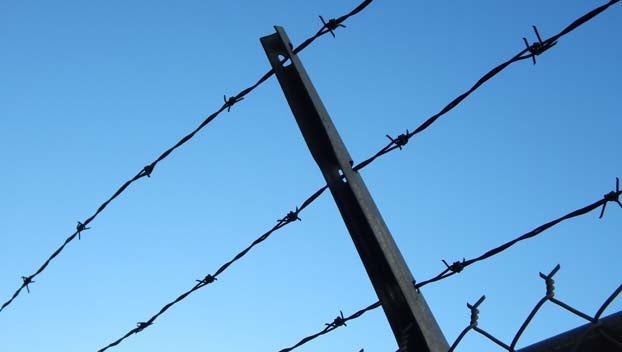Mississippi’s workforce gets boost from prison system
Published 5:49 am Saturday, February 26, 2022
Job training and rehabilitation have become the focus at the state’s prisons, with dozens of new classrooms and training opportunities cropping up in Mississippi’s prisons over the past two years.
Mississippi Department of Corrections Commissioner Burl Cain, who took the helm of the agency in 2020, has placed a large focus on creating a network focused on making inmates ready to re-enter society when their sentence is done.
“What we’re doing is creating communities,” Cain said.
A shift from having the state’s prisons run centrally from Jackson to each warden being in full control has helped streamline operations so far, though Cain said work still needs to be done to maintain consistency.
Cain said preparing inmates to fully return to society is necessary, especially with the focus on reducing recidivism in the state from its peak of 37.4% in fiscal year 2020.
“I personally haven’t heard of this anywhere where (an administration) sets aside an entire prison for just schooling,” he said. “But if we’re going to train you how to do a job, you need to be able to read and write and balance a checkbook, so that’s what we’ll do.”
Some projects underway in the system will transform a few of the state’s prisons purely into rehabilitation and job training facilities, Cain said.
For example, the Washington County Regional Correctional Facility in Greenville will be primarily focused on entering minimum-security inmates with less than six years to serve into a two-year GED program, followed by a two-year re-entry program with on-the-job training.
Vocational training has seen a large expansion since 2020 and nearly every prison under the state’s umbrella offers some form of program, largely taught by inmates themselves.
Cain said there are roughly 100 certified inmate-teachers in the state’s prison system now, but he hopes to have at least 500 by the end of 2023.
While the state has focused largely on expanding its job programs, questions of safety for both inmates and employees still surround the state’s prisons.
Disrepair is rampant and conditions were so bad in the infamous Unit 29 at the Mississippi State Penitentiary at Parchman that it was deemed unsafe for habitation in 2020. Chronic understaffing throughout the network also remains an issue. An April report from Mississippi’s Joint Legislative Committee on Performance Evaluation and Review found job vacancy rates of more than 54% at Parchman alone as of 2020.
Reports from the Marshall Project, a nonprofit newsroom focused on the criminal justice system, obtained hundreds of documents from the state’s privately run prisons that showed dangerous working conditions as a result of lack of staff. More than 800 inmate-on-inmate assaults were also recorded in 2020, the highest total since 2016.
The corrections department took over the Marshall County facility in September after Cain and several agency members spent hundreds of collective man-hours visiting the facility. Cain said the decision was largely due to costs from the contract the agency maintains with Management and Training Corporation, which still oversees the East Mississippi Correctional Facility in Meridian and the Wilkinson County Correctional Facility in Woodville.
In the early weeks of the COVID-19 pandemic, inmates at the Mississippi State Prison in Parchman worked through Mississippi Prison Industries Corp to sew masks and gowns. The partnership included the Mississippi Emergency Management Agency and Blue Delta Jeans Co.
“They had a contract that covered 900 inmates when we only had 600 there,” Cain said. “That was just something we couldn’t maintain, so that was the main reason we had driving us to take it back.”
Cain said the corrections department is currently mulling its contract with MTC in order to make necessary repairs at East Mississippi and put proper protocols into place.
The Wilkinson County Correctional Facility, where some of the most violent attacks occurred according to internal monitoring reports, is currently under a new warden and is now running smoothly, Cain said.
“It’s who the leadership is,” he said. “If you have good leaders and hire the right people, then we’re good.”
Getting more guards to staff the prisons is another challenge as low pay compared to surrounding states has drawn potential employees across state lines. Cain said there are plans to raise the $32,000 base salary employees currently receive after six months on the job to $38,300, but the raise can’t happen until funding is released in July.
“Every lawmaker I talk to, including the governor, is behind that raise 100%,” Cain said.
Cain said once the system has more staffing and inmates have largely settled into the new system, his goal is to create community environments similar to those at Louisiana State Penitentiary, also known as Angola, when he retired from the prison in 2016.
Plans are currently in the works to create an arts and crafts fair that would take place at the prison, as well as start a boxing league in the spring that would be open to public viewing. Other sports leagues, such as basketball, could also come in the future, Cain said.
The community-based changes already taking place in Mississippi’s prisons have caught the attention of criminal justice scholars and universities such as Pepperdine University in California who want to study the impact of the transformation.
“There are folks that want to come and make documentaries about it that we’re considering,” Cain said.
Cain said with the focus on rehabilitation, the state can make great strides in continuing to reduce the recidivism rate, but also give inmates a chance at being productive and capable of sustaining themselves after release.
“The good thing is that the legislators … are all behind us with these changes,” Cain said. “Now we have to produce and we’re going to produce.”
More News






